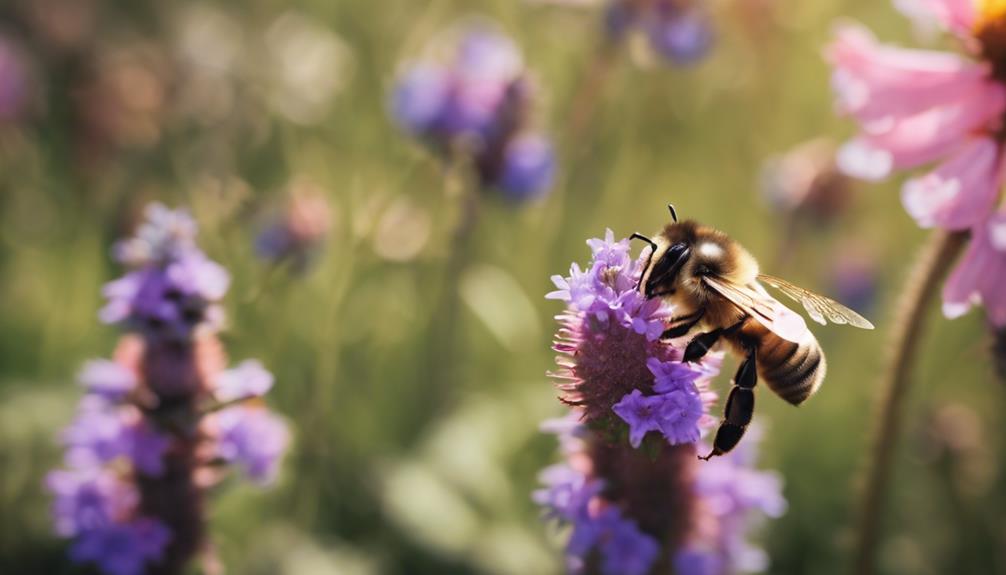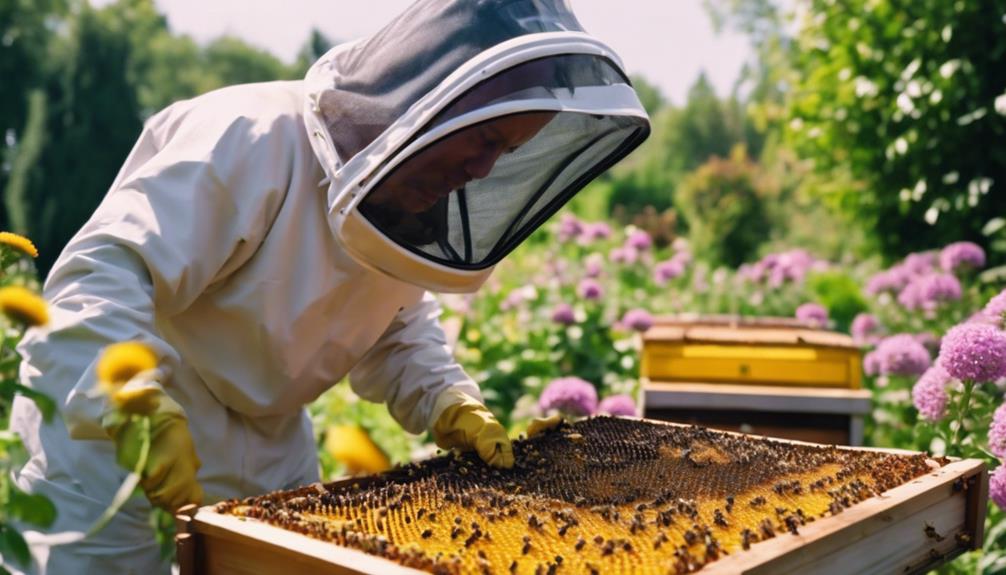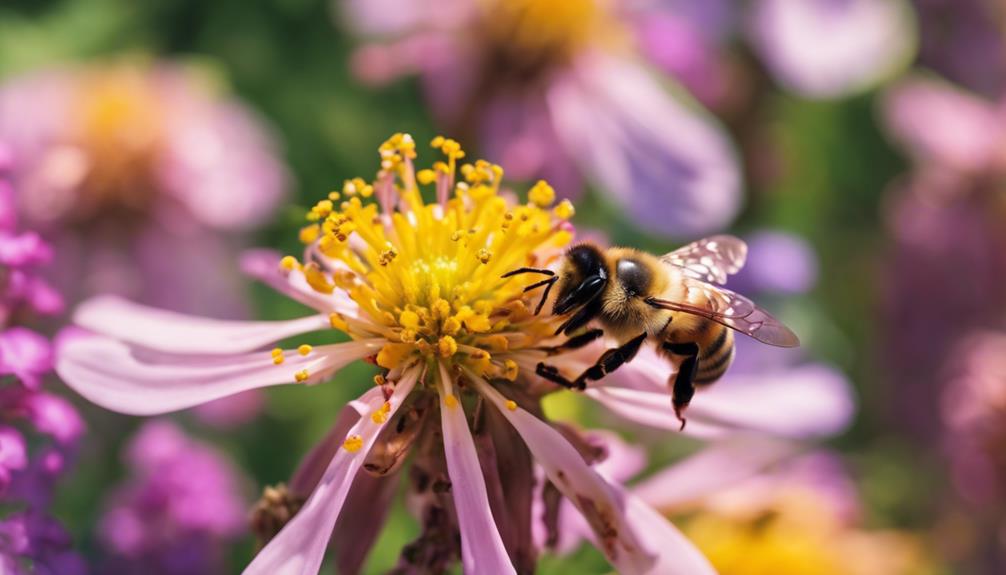Regarding bees, there’s a trio of main types buzzing around: Honey Bees, Bumblebees, and Solitary Bees. Honey Bees, like the Apis mellifera species, have a queen bee bustling about, laying up to 1500 eggs daily! Bumblebees, part of the Genus Bombus, flaunt their fuzzy look and temp-regulating shivers while performing epic buzz pollination. Solitary Bees, such as Adrena spp. and Panurginus spp., work solo yet play a huge role in pollination. Curious to know more about these marvelous creatures? Keep an eye out for the secrets nature holds about each bee type!
Main Points
- Honey bees: Apis mellifera with queen, worker, and drone roles.
- Bumblebees: Genus Bombus, fuzzy appearance, buzz pollination.
- Solitary bees: Diverse nesting habits, vital pollinators, work independently.
- Importance of honey bees: Essential for pollination, colony harmony.
- Significance of bumblebees: Crucial pollination partners, temperature regulation.
Honey Bees
Honey bees, belonging to the species Apis mellifera, play an essential role in our ecosystem. Within a hive, there are three types of bees: the queen bee, worker bees, and drones.
The queen bee reigns supreme, laying up to 1500 eggs daily, ensuring the colony’s survival. Worker bees, all females, tirelessly toil in tasks like foraging for pollen and nectar, nursing the young, and constructing intricate wax cells.
Drones, the male bees, have a singular mission – to mate with virgin queens. Their larger size sets them apart from the female worker bees. Together, these bees form a harmonious colony, each with a specific role that contributes to the hive’s overall success in pollination and honey production.
Bumblebees
Bumblebees, belonging to the genus Bombus, are renowned for their fuzzy appearance and distinctive buzzing sound. These social insects form colonies with a queen, workers, and drones, working together to pollinate crops like tomatoes and peppers, boosting agricultural yields.
What sets bumblebees apart is their ability to regulate body temperature by shivering, allowing them to thrive in cooler climates. One fascinating behavior they exhibit is ‘buzz pollination,’ where they vibrate to release pollen from flowers with tightly packed anthers.
Watching bumblebees go about their busy work in the garden isn’t just mesmerizing but also essential for the ecosystem. Their furry bodies and gentle hum serve as gentle reminders of nature’s intricate beauty and the critical role these pollinators play in our world.
Solitary Bees

Solitary bees, unlike their social counterparts, don’t live in colonies and operate independently in their nesting and pollination activities. These non-social bees have fascinating behaviors that set them apart:
- Diverse Nesting Behaviors: Solitary bees exhibit various nesting habits, from creating tunnels in the ground to burrowing into soft plant stems.
- Key Species: Examples like Adrena spp. and Panurginus spp. play vital roles in pollination, ensuring the transfer of pollen between flowers.
- Pollination Powerhouses: These bees are excellent pollinators, visiting flowers for nectar and pollen, contributing significantly to plant reproduction.
Solitary bees may work alone, but their impact on pollination is far from solitary!

Hello! My name is Noel Calvin. I graduated from UCLA and now work as a writer at Launch Ninjas. I write blog posts that inspire and guide our readers in their entrepreneurial pursuits. I live in Pleasantville, NJ, with a peaceful yet lively atmosphere that inspires me.
Writing stories is more than just a job for me. It allows me to share my observations and satisfy my curiosity about the world. I combine my analytical skills with creative enthusiasm to delve into technology trends and startup stories. But my life isn’t limited to screens and keyboards. I value loyalty, passion, and a touch of old-fashioned charm, which I infuse into every narrative I create.
I love spending time in my garage, jamming with my band when I’m not writing. Playing the guitar and singing bring me immense joy. I also enjoy capturing ordinary and extraordinary moments through my camera lens and exploring new culinary adventures that excite my taste buds. I’m always seeking new experiences.
My family is very important to me. Joyful Sunday brunches filled with laughter and intense board game nights keep me grounded, reminding me of life’s simple pleasures.
In my world, every moment is an opportunity for discovery. Every discovery is a story worth sharing, whether a heartfelt moment at home or the pulse of technological innovations. Join me as I navigate through life, one blog post, one guitar strum, and one heartwarming family dinner at a time.


